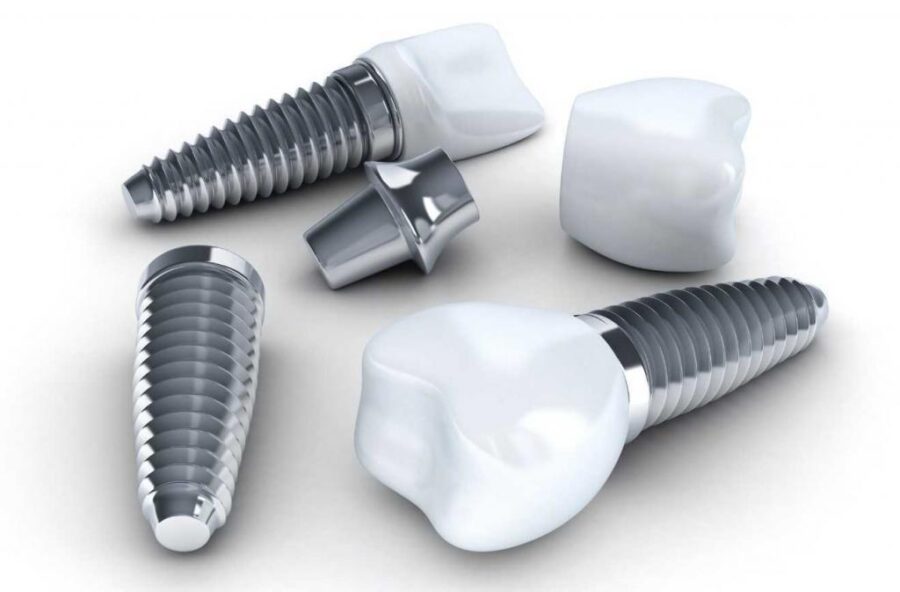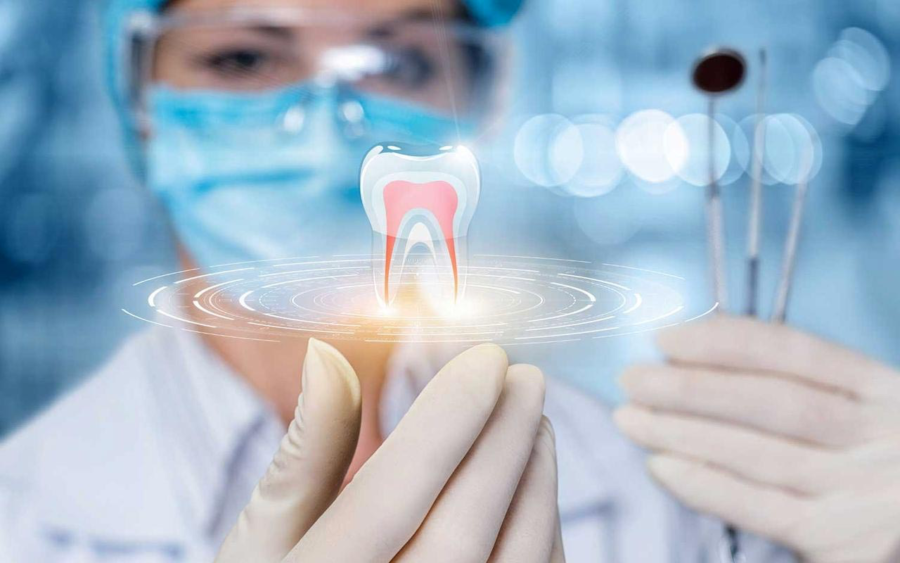Nanotechnology has revolutionized the way we think about dentistry. By making use of molecular-level engineering, nanotech has provided new solutions for treating dental problems, from tooth decay to gum disease. This technology has been used to create advanced materials for dental implants, fillings, and more. It has also enabled us to develop new tools for diagnosing and treating dental diseases. In this article, we will discuss the various benefits and uses of nanotechnology in dentistry and explain why it is such an important part of modern dentistry. We will also look at how the use of nanotechnology in dentistry has been growing over the years and talk about the potential future implications of this dental technology.
What is Nanotechnology?
Nanotechnology is a field of science that deals with the manipulation of matter at the nanometer scale, which is one billionth of a meter. It is an interdisciplinary field of research and development that focuses on the understanding, manipulation, and control of matter at the nanometer scale. It has enabled us to create materials and devices on a nanometer scale, which has enabled us to create materials and devices with properties that would not exist in nature. It has been used in many fields, such as medicine, engineering, electronics, and even dentistry.
How does Nanotechnology work?
Nanotechnology is a rapidly evolving field that has the potential to revolutionize various industries, including dentistry. In dentistry, nanotechnology is used to improve materials used for dental restorations, implants, and drug delivery systems. Here are some examples of how nanotechnology is being explored in dentistry:
Dental restorations: Nanoparticles can be added to dental materials such as composites and ceramics to improve their strength, durability, and aesthetics. Nanoparticles of silica, zirconia, and titanium dioxide have been shown to enhance the mechanical properties of dental materials.

Dental implants: Nanotechnology is being used to create new implant materials that can better integrate with the patient’s natural bone tissue. Nanostructured surfaces on dental implants have been shown to improve the osseointegration process, which is the process by which the implant fuses with the bone.
Drug delivery systems: Nanoparticles can be used to deliver drugs and other therapeutic agents directly to the site of a dental infection or inflammation. This targeted approach can improve the efficacy of the treatment while minimizing the side effects associated with systemic drug delivery.
Oral health monitoring: Nano sensors can be used to monitor oral health in real-time. These sensors can detect the presence of bacteria and other pathogens in the mouth, allowing for early intervention and the prevention of oral diseases.
Benefits of Nanotechnology in Dental Prosthesis
Nanotechnology offers many benefits to the field of dental prosthesis. It has enabled us to create more advanced materials for dental implants, such as biocompatible metals and ceramics. These materials are stronger and more resilient than traditional materials, making them ideal for dental implants. Additionally, nanotechnology has enabled us to create more advanced materials for fillings, such as composite materials. These materials are more durable and resistant to wear and tear, which makes them ideal for long-term fillings.


Nanotechnology has also enabled us to develop new tools for diagnosing and treating dental diseases. For example, nano sensors can be used to detect and diagnose diseases at an early stage, which can help prevent them from getting worse. Additionally, nanotechnology has enabled us to develop new treatments for dental diseases, such as nanomaterials that can be used to kill harmful bacteria. Finally, nanotechnology has enabled us to create more advanced materials for dental prosthetics, such as prosthetic teeth, which can be used to replace missing or damaged teeth.
Uses of Nanotechnology in Dentistry
Nanotechnology has been used in many different ways in dentistry. One of the most common uses of nanotechnology in dentistry is for dental implants. And nanotechnology has enabled us to create more advanced materials for dental implants, such as biocompatible metals and ceramics. These materials are stronger and more resilient than traditional materials, making them ideal for dental implants.
Additionally, nanotechnology has enabled us to create more advanced materials for fillings, such as composite materials. These materials are more durable and resistant to wear and tear, which makes them ideal for long-term fillings. Overall, nanotechnology has the potential to improve the quality of dental care by providing better materials, enhanced diagnostics, and more effective treatments. However, more research is needed to fully understand the benefits and risks associated with nanotechnology in dentistry.
Growing Use of this Dental technology in Dentistry
Over the past few years, the use of nanotechnology in the dental field has been growing rapidly. This is due to the fact that nanotechnologies offer many advantages over traditional dentistry methods, such as improved accuracy and flexibility. Additionally, nanotech enables us to create more advanced materials for dental implants, fillings, and more. This has enabled dentists to provide more effective and efficient treatments for their patients.
In addition to the advantages of nanotechnology in dentistry, the cost of using nanotech is also relatively low. This makes it a more cost-effective option for many dentists, which has helped to increase its use in the field. Additionally, the use of nanotechnology in dentistry has been growing due to the advancements in technology and the increased understanding of its potential benefits.
Potential Implications of Nanotechnology in Dentistry
As the use of nanotechnology in dentistry continues to grow, there are many potential future implications that could arise. For example, nanotech could be used to create more advanced materials for dental implants, fillings, and more. Additionally, nanotech could be used to create new tools for diagnosing and treating dental diseases. This could enable us to detect diseases at an earlier stage, which could help prevent them from getting worse. Finally, nanotech could also be used to create more advanced materials for dental prosthetics. Such as prosthetic teeth, which could be used to replace missing or damaged teeth.
The use of nanotechnology in dentistry could also have some potential ethical implications. For example, there are concerns about the potential misuse of nanotechnology in dentistry. Such as the use of nanomaterials for cosmetic purposes. Additionally, there are concerns about the potential for nanotech to be used to create advanced materials that could harm or damage the human body. Finally, there are also concerns about the potential for nanotech to be used for unethical purposes, such as the creation of “designer” teeth or other dental implants.
Ethical Considerations of Nanotechnology in Dentistry
The use of nanotechnology in dentistry raises many ethical considerations. For example, there are concerns about the potential for the misuse of nanotech in dentistry. Such as the use of nanomaterials for cosmetic purposes. Additionally, there are concerns about the potential for nanotech to be used to create advanced materials that could harm or damage the human body. Finally, there are also concerns about the potential for nanotech to be used for unethical purposes, such as the creation of “designer” teeth or other dental implants.
In order to address these ethical concerns. It is important for dentists to ensure that they are following proper ethical guidelines when using nanotech in their practice. Additionally, it is important for dentists to be aware of the potential risks associated with nanotech and to take steps to minimize those risks. Finally, it is important for dentists to be aware of the potential for the misuse of nanotech in dentistry and to take steps to ensure that it is not used for unethical purposes.
Conclusion
Overall, nanotechnology has been a game-changer for the field of dentistry. Enabling us to create new materials, tools, and treatments for dental problems. As the use of nanotechnology in dentistry continues to grow, It is important for dentists to ensure that they are following proper ethical guidelines when using nanotech in their practice. Additionally, it is important for dentists to be aware of the potential risks associated with nanotechnology and to take steps to minimize those risks. With the continued use of nanotechnology in dentistry, We can look forward to even more advanced materials, tools, and treatments in the future.
Crowns and bridges needed for dental prostheses are made at the Royal Dental Clinics Lab, utilizing the most advanced technology available. For more than 35 years, we have been manufacturing dental crowns in accordance with studies from the International Institute of Dental Research. We are known and well-regarded for our founder’s work in the field of implantology. We have a maxillofacial CBCt on-site with CAD and CAM.






